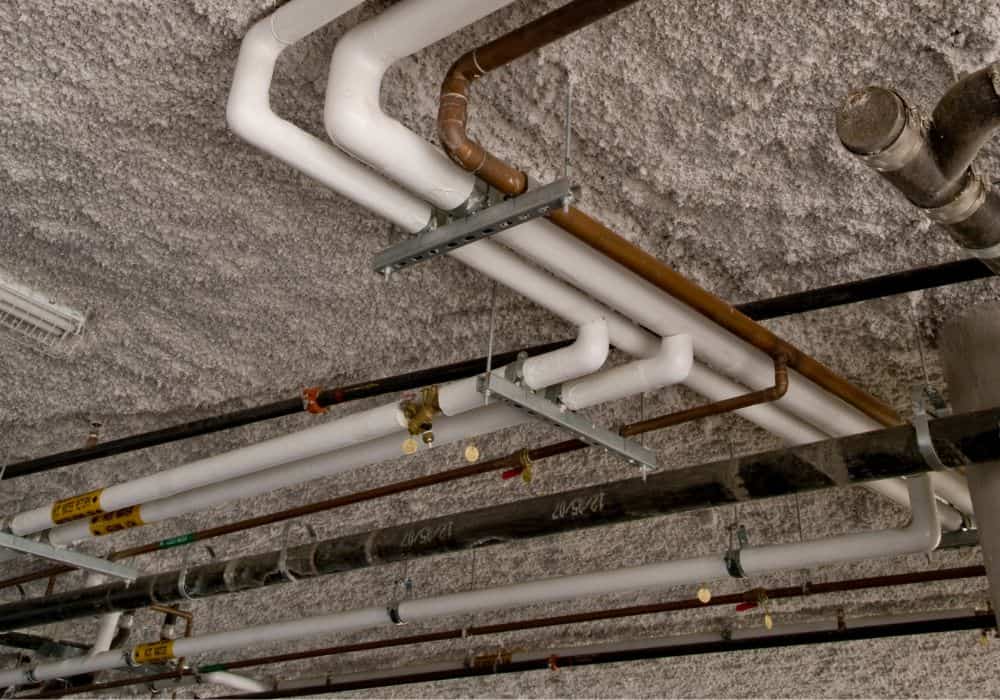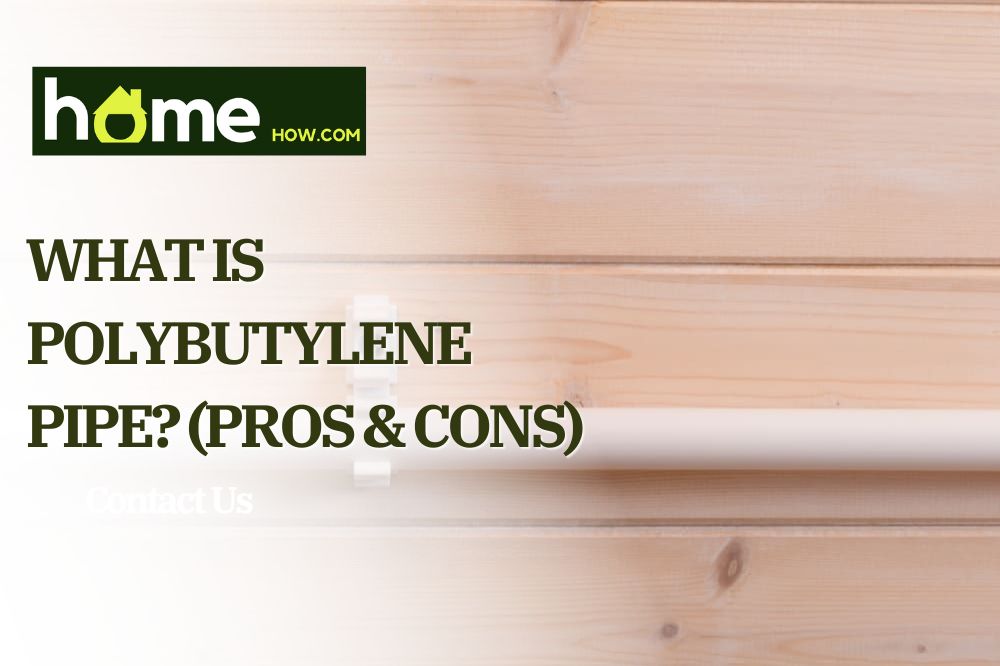If you are a homeowner, you might have come across this word and asked yourself: what is polybutylene pipe?
This kind of pipe was a popular choice for water supply and drain piping in homes built between 1970 and 1995. It’s been used in over 25 million homes and is still being installed today.
The pipes are made from a plastic-like material that’s strong enough to withstand high temperatures and corrosive chemicals but tend to break down over time. If your home’s plumbing has polybutylene pipe, read on to find out if you should be concerned about its safety.
What is polybutylene?
Polybutylene pipe looks like a white PVC pipe substitute, but it’s actually made from a different ingredient: polybutylene terephthalate, or PBT. Polybutylene is a plastic resin used to make pipes and tubing in plumbing systems. It’s also known as PB pipe.
PBT is a polymer resin that is created by combining diamine with terephthalic acid in an esterification process. This process results in a thermoplastic polymer that can be molded at room temperature. The resin is then extruded into tubing which is welded together into pipes using heat and pressure.
Polybutylene is a great material for this kind of thing because it’s flexible so it can be used in small spaces. They were cheap to make and easy to install, which made them very popular among builders and contractors during their heyday in the 1980s.
When did it become popular?
Polybutylene was developed in the 1970s by Exxon and Dow Chemical Company, who wanted to create a cheap material that could replace galvanized steel pipe. They succeeded: PB pipes were strong and durable, and they didn’t rust as steel does – and that’s why it was so popular during its heyday.
It was sold by manufacturers as a cheaper alternative to copper plumbing in the 1980s and 1990s. So if you have a home built between 1978 and 1995, it’s likely that your sinks and toilets have polybutylene pipes (or had it at some point).
In addition, if your home was built before 1978 and still has copper pipes, there’s a good chance those pipes were replaced with polybutylene at some point during the construction process or shortly after moving in.
Downsides vs advantages of polybutylene?
As mentioned before, polybutylene has some advantages:
- Flexibility
- Easy to installation
- Resistance to freezing
- Affordable
So if you are looking for a cheap alternative that is easy to install, polybutylene might be a good way of plumbing. If you also have a really tight space, you might want to choose this material: the material’s flexibility makes it possible to bend the pipe to fit even the most difficult locations.
Unfortunately, polybutylene has some serious problems with durability. Around 1990, they started to leak—and not just a little bit.
The reason for this? Many of these pipes were made with a type of plastic that was supposed to be resistant to chlorinated solvents like trichloroethylene (TCE) but turned out not to be as resistant as expected when exposed over a long period of time. The chemicals were interacting with the water and chlorine passing through them, causing the inside of the pipe walls to break down over time into little pieces that would clog up drains or even burst through toilets and tubs.
How to identify polybutylene pipes inside your house?
During the relevant time period, polybutylene was frequently used for most major water lines. Since they are underground, it is hard to see them or determine whether they have burst. Even if you have copper plumbing near sinks and fixtures, it’s still probable that your home has other polybutylene plumbing.
If you’re worried about whether your home has polybutylene pipes, there are several ways that you can check:
- Check for discoloration on your faucets or fixtures that use water from this piping system.
- Check your water meter. Polybutylene pipes look just like copper pipes, and they can be used for hot or cold water. If your water meter is marked with a “PB” or ‘PB2110’ sticker, then you have polybutylene pipes.
- Toilet flush test. Notice that your toilet flushes differently than usual after a period of time. This might be because of a blockage caused by the build-up of sediment inside the pipe due to corrosion from acidic water over time. This could also mean that there are cracks somewhere along the line, causing water pressure loss which leads to increased difficulty in flushing properly without needing more water pressure than usual.
- Rusty water coming out of your faucets or showerheads
- Strange scents coming from the drains or toilets in one or more rooms of the house (think rotten eggs)
- Sudden bursts of water pressure when using sinks or showers in certain areas of the house but not others
If you have any of these symptoms in your house, it might be time to call some plumbers and think about replacement.
Do you need to replace your polybutylene pipes?
Reasons for replacing
The International Association of Certified Home Inspectors advises replacing the plumbing in any home that has polybutylene piping. They are also prone to leakage and corrosion due to their composition; this means that even if they aren’t leaking now, they could at any time in the future, so our advice is to try and replace them if you can.
In the end, you’ll be saving money on your monthly water bill because polybutylene pipes are notorious for leaking (and are therefore less efficient). You’ll also save on energy costs because they’re connected to your hot water heater—and when they leak, they waste energy.
How to replace it?

If you decide to replace your polybutylene pipes with new ones, we recommend using PVC or copper instead. You will need to hire a professional who has experience with this type of piping system if you don’t feel comfortable doing it yourself.
But if you want to do it by yourself, you need to be mentally and financially ready for that because this is a lengthy process. During this process, you will need to remove all of your old pipes before replacing them with new ones. Make sure that you remove any debris and possible mold from inside your basement walls so that there is enough room for new pipes without damaging them or causing unnecessary damage during installation.
Costs to replace polybutylene pipes
The price to replace your polybutylene pipes is not cheap. In fact, it’s likely to cost you between $1,000 and $2,000 per bathroom to replace them. To give you some perspective on how much this can cost, consider this: if you have an older home with polybutylene pipes (which were installed before 1992), it’s very likely that your home has these types of pipes in all of its bathrooms. And if that’s the case, then replacing all of those pipes could easily cost thousands of dollars.
There are ways to lower the cost of replacing your polybutylene pipes. One way is by getting quotes from a few different contractors and seeing who can offer the best price for the job. Another way is by finding out if there are any grants available in your area that will help cover the cost of installation.
Conclusion
Polybutylene was popular for plumbing because it’s lightweight and easy to install. But it also had a big problem that no one saw coming: it broke down after long periods of time and started leaking and bursting into people’s homes.
If you think your house still has polybutylene pipes, we recommend checking on them and replacing them as fast as you can. Even if you don’t notice any leaks, it’s always better to be safe than sorry. Let us know in the comments what you think and ask if you have any questions!
